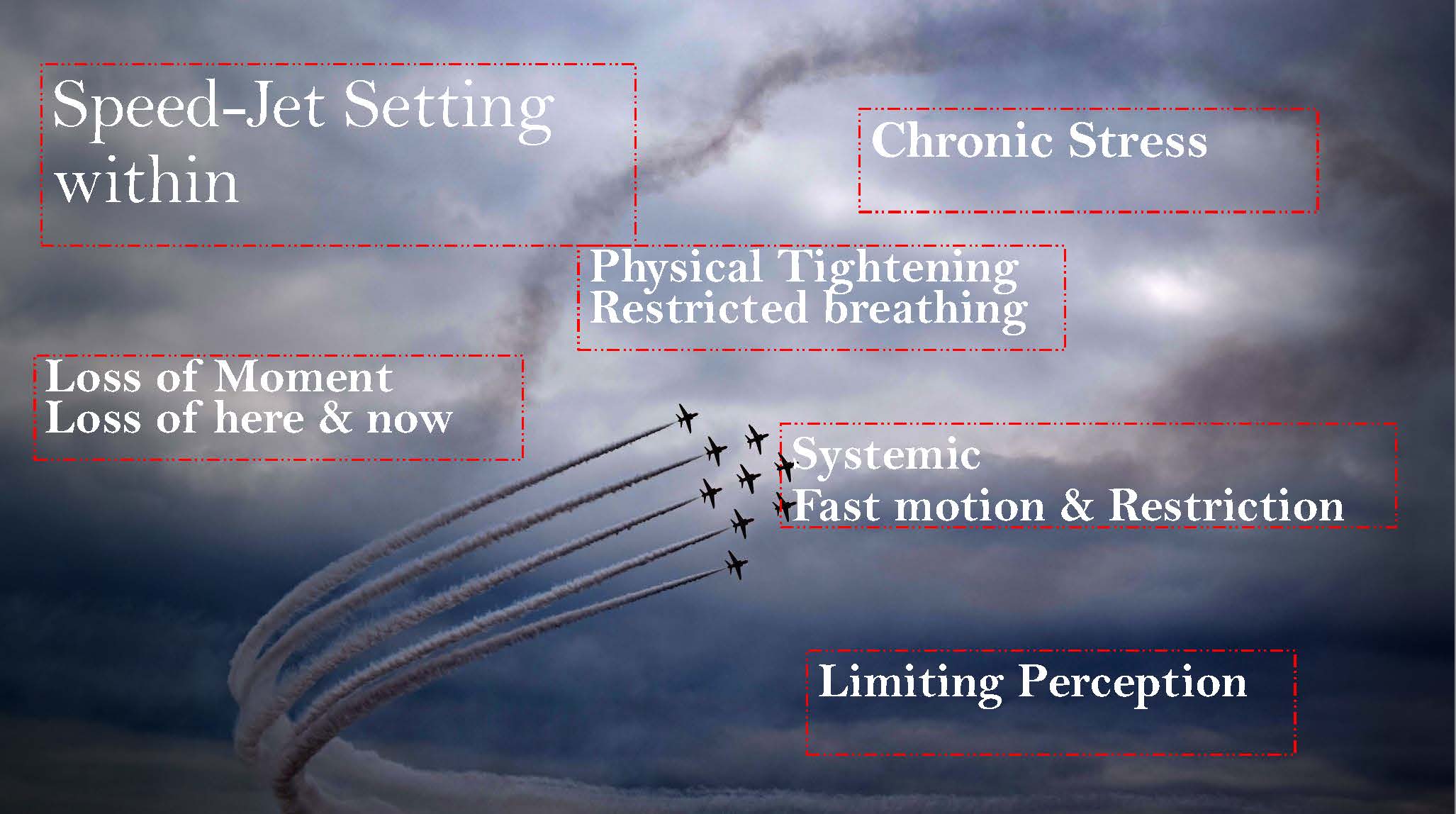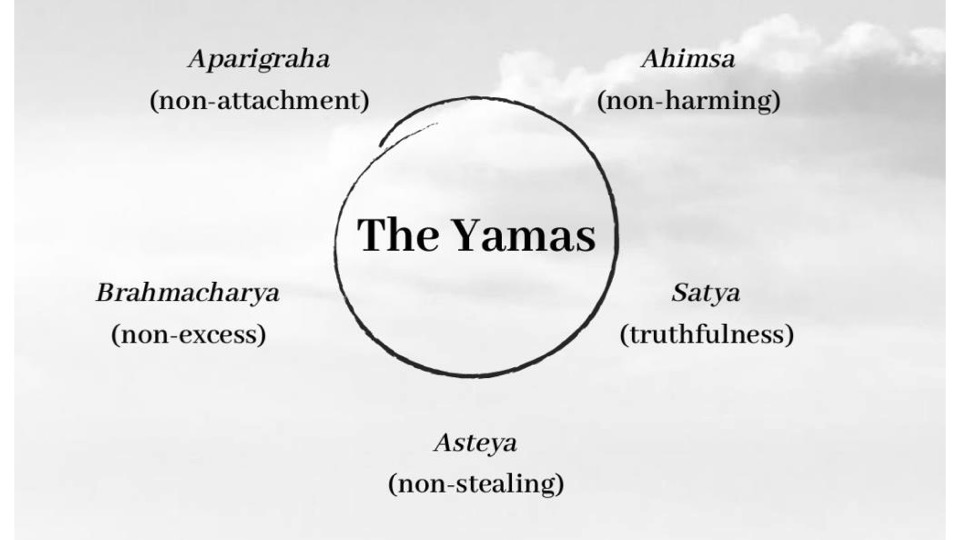Ethical Behaviours and The Yamas. 1st Limb
Dear Readers, Welcome to SC Musings, Blog 41
After going through the 8 limbs and reflecting on them, I discovered learnings for life and living; and realised I am just at the surface level. Hence, I decided to delve deeper and explore each limb. This would take us to answers on Why ethical behaviours? and also, to How they enhance us personally, professionally and organisationally?
Focusing on the 1st limb, yama in this Blog, I decided to make meaning of it using ‘hurrying’, a characteristic trait of us Indians.
Returning to Coimbatore after traversing 3 countries- Switzerland, France and the UK by air, rail and road, awareness of the speed within dawned. I was jet setting inside, continuously to the next and then the next, in a continuous flow. The outcome of this inner speed was and is chronic stress manifesting physically as tightening of the body, especially around my shoulders; with a following chain reaction resulting in breathing being restricted in the chest. Thus, my whole system was in a state of fast motion and restriction, narrowing and limiting my openness to receive and perceive incoming stimuli. Travels and meeting targets heightened and intensified this state of restricted living, and tended to pervade all aspects of my life. Loss of the moment, the here and now is the biggest loss induced by this state.

According to Yati (2009), Yama, the first limb of Yoga is
‘Restraint from negativity’ (p. xvi) .
Yama encompasses the following five principles:
Ahimsa: Non-Harming
Satya: Truthfulness
Asteya: Non-Stealing
Brahmachariya: Non Excess
Aparigraha: Non-Attachment

Let us now move into a practical and operational understanding of each of these principles:
- Non-violence is refraining from harming self-others-environment. Self-harm can be through over-indulgence in food or sensory pleasures, which impacts self, percolating to others and one’s context. Hurrying also harms by restricting or losing connection in these three domains.
- Truthfulness is the deep processing of stimuli and behaving in tune with one’s intent, with consideration to others and one’s context.
- Not stealing refers to mindful functioning, without impinging on others time, energy or efforts. Talking too much robs others time, as does taking undue credit for actions and accomplishments.
- Non-excess may be applied to anything that is consumed. In a consumerist society, excess is required for the functioning of the system challenging the principle of non-excess.
- Non- attachment is not being tied to our identity, ideas etc.
I am not going into a further exposition of these principles because they have been instilled in us by our tradition and culture. We grow up on a diet of these restraints, infused into our system by parents, extended families, educators and surrounding others. They become an integral part of our psycho-social network, and to some extent prevent us from excesses. However, practising these principles take a back seat when faced with forces which propel us to mindless action.
Hurrying and completing assignments are also driving forces lodged in us, introjected by educational and industrial systems, reinforced by parents and parental figures. These forces embedded within are named as drivers (Kahler & Capers, 1974) in transactional analysis.

Thus, caught between tradition and drivers, we swing from side to side, rushing and gushing through the stream of life.
Now, coming to how we apply yama in our personal, professional and systemic lives, I am herewith sharing my experiences:
- A commitment to anchoring in these principles is the foundation of applying yama. Renewing the commitment on a continuous basis keeps it alive
- Intentional and mindful internalising of the 5 yamas, Non-Violence, Truthfulness, Non-Stealing, Non-Excess and Non-Attachment through understanding, practice and reflection enable us to reach points of union and harmony within. Again continuity ensures engagement
- Turning attention within to sensory stimuli, like our breathing, posture, tensions etc. help us pause. ‘Drop into your body’ states Rani (Hughes) at the end of our Taichi online sessions. This simple guidance helps to increase my body awareness.
Despite knowledge of the ‘Hurry up’ driver (Clarkson, 1992) for years, I have recently become acutely conscious of its internal dynamics- how it drives me to do or withdraw. This awareness continues to be triggered by people-work, where clients, trainees and participants require time to shift focus, assimilate or transform, respectively. Taichi practice, and being a Master Trainer with TCHI grounds me in stillness, where time stands still.
The simple and straight answer to Why Ethical Behaviours is that it frees us from compulsions, urges and surges within. Also, it brings awareness and harmony, which are joyous. Yama, the 1st limb provides us simple concepts which can be practised.
We have our own role model Gandhi who “spoke of "spiritual force". He referred to an "inner voice" guiding him. His emphasis on truth, nonviolence, love, compassion, and altruism are hallmarks of spiritual psychology applied to life and social action.: (Gandhi, 1938, 1958 as quoted in Rao, 2018) .
Dear Reader,
Yamas, often treated as heavy and abstract concepts can be simplified when operationalised. I invite you to ‘drop into your bodies’ and see and feel your sensations.
Let’s move on niyamas and ethical behaviours in Blog 42

References:
Clarkson, P. (1992). In Praise of Speed, Experimentation, Agreeableness, Endurance, and Excellence: Counterscript Drivers and Aspiration. Transactional Analysis Journal, 22(1), 16–20. https://doi.org/10.1177/036215379202200103
Gandhi, M. K. (1938). Hind swaraj or Indian home rule. Ahmedabad: Navajivan Publishing House.
Gandhi, M. K. (1958-1994). Collected works of Mahatma Gandhi. 100 volumes. New volumes. New Delhi: Publications Division, Ministry of Information of Broadcasting, Government of India.
Kahler,T., Capers, H. (1974). The Miniscript. Transactional Analysis Journal, 4(1). 26-42. https://doi.org/10.1177/036215377400400110
Rao, K.R. Mahatma Gandhi's Pragmatic Spirituality: Its Relevance to Psychology East and West. Psycho! Stud (April-June 2018) 63(2): 109116.https://doi.org/10.1007 /s 12646-017-0394-x
Yama. 2010-2025), https://www.bodhisurfyoga.com/8-limbs-of-yoga
Yati, G.N.C. (2009). Living the Science of Harmonious Union. Principles and Practice of Patanjali’s Yoga Sastra. D.K. Printworld (P) Ltd. New Delhi